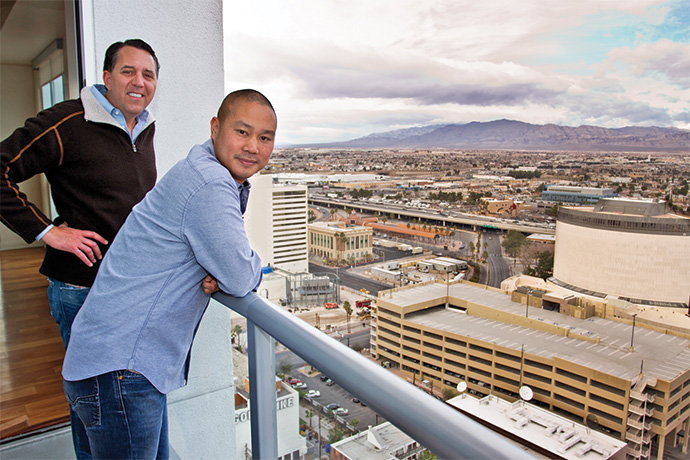Whether or not Elon Musk opts to locate his Tesla battery plant in Nevada, the Silver State is still winning big. In December 2013, the Federal Aviation Administration announced that Nevada would be one of six unmanned aerial vehicle (UAV) development and test sites. With active UAV operations at Creech Air Force Base and 31,500 square miles (81,585 sq. km.) of restricted air space, Nevada was a logical choice.
It’s believed the UAV development site will result in thousands of direct, high-wage jobs and an estimated $2.5 billion in statewide economic impact. Hundreds of companies have expressed an interest in testing their commercial UAVs in Nevada, with 20 companies in active discussions with state economic developers.
Recognizing the need and the opportunity to develop a highly educated, tech-savvy workforce, universities are getting in on the act, too. The University of Nevada-Reno College of Engineering began offering an interdisciplinary minor degree program in unmanned autonomous systems (UAS) in the 2014 spring semester. This summer the university went even deeper in cultivating the talent pipeline, offering a first-of-its-kind camp for high school students interested in learning about UAS.
The program was an initiative of the Nevada Advanced Autonomous Systems Innovation Center (NAASIC) begun by the College of Engineering to build economic development in the autonomous systems industry. NAASIC is a collaboration led by higher education comprising the Economic Development Authority of Western Nevada (EDAWN), the Governor’s Office of Economic Development, the manufacturing industry and K-12 education.
“This is all part of an autonomous systems innovation eco-system we are creating in our region,” said Manos Maragakis, dean of the College of Engineering.
A Startup Haven
An explosion of high-tech incubator and accelerator space in Nevada is encouraging the growth of innovation and small business development.
”
One of the reasons Switch came to Nevada was because it was
the least affected by natural disasters.“
— Carolyn Goodman, Mayor of Las Vegas
Startup Row is a bustling corridor of activity along First Street between Virginia and Washington Streets in downtown Reno. High-tech residents include
inquiri, an online collaborative decision-making platform;
BHeard, a Web portal for advocacy groups and free smartphone app for individuals; and
Crazy Tooth Studio, a video game development studio that had its roots in the casino gaming industry. Other tech, app and e-commerce companies are located throughout the city creating everything from online party planning to biometrics. The startups and entrepreneurs are supported by entities including EDAWN; the Reno Collective; and Nevada Venture Accelerator.
Still best known for its casinos, floor shows and all-you-can-eat buffets, Las Vegas offers an energetic, 24-hour atmosphere that attracts tech entrepreneurs and startups. Mayor Carolyn Goodman says bring it on.
“Anything big was once small,” she says. “Coming out of the recession, we found that small is where we had to be.” The city offers a business incubator program supporting small business development, including those in the tech sector, and is working with community leaders and partners to identify opportunities to enhance the technical workforce.
“We’ve grown so rapidly, population-wise, in the past 30 years,” says Goodman. “We have technology schools that don’t have enough space for all the students who want to attend them. The school district is adding 15 magnet schools this year. Schools in southern Nevada have a heavy emphasis on STEM education.”
Corporate partners, such as e-commerce giant
Zappos, are also supporting small companies through the VegasTechFund, a seed stage investment fund that provides financial and business support to tech entrepreneurs in Las Vegas. “Tony Hsieh, CEO of Zappos, put up $350 million of his own money to invest in small business with a big emphasis on technology, startups and incubators,” says Goodman. “It’s created a lot of buzz nationally. With capital like that, Las Vegas is becoming a heaven or a haven for startups.”
Come Co-locate With Me
Las Vegas’ digital infrastructure and abundance of traditional and green power sources make it a favored location for data centers, such as
Switch Communications and
Cobalt. “One of the reasons Switch came to Nevada was because it was the least affected by natural disasters,” says Goodman. “Being the repository for all this data perked up the ears of other tech companies to look at Nevada.”
Switch operates one of the world’s largest and most powerful data centers on its Las Vegas campus. The company serves more than 600 global clients, from startups to Fortune 100 companies. In June 2013, Switch unveiled its new SUPERNAP 8 data center facility, offering increased capacity and density levels.
In November 2013, Rochester, N.Y.-based
OffsiteDataSync opened a third data center location in Las Vegas in the state-of-the-art Cobalt Tier 3 data center. According to media reports in June,
Apple has submitted plans to expand its Reno data center, originally built in 2012. Plans include four new buildings, bringing the total number of buildings to nine, including eight data center clusters and an administrative building.
